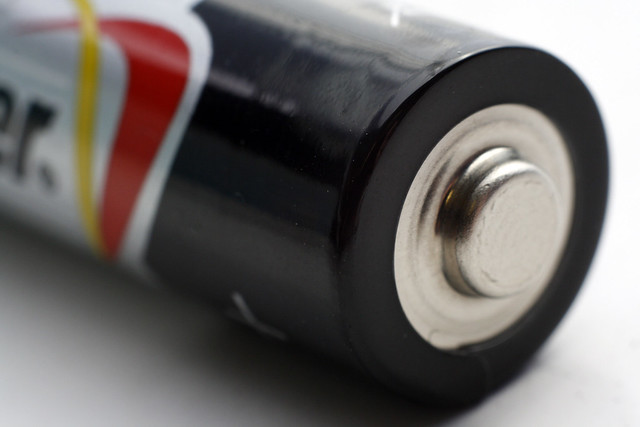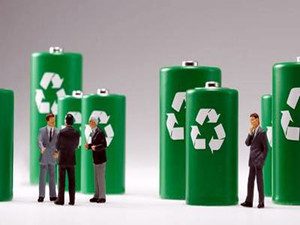Lithium Battery Waste- What waste does it belong to?
Sep 02, 2019 Pageview:1257
Lithium batteries have taken over the market and they come in various sizes, shapes and chemistries. There are small batteries that can be used on digital watches, digital cameras and there are the big ones that can even be used in cars and other appliances in offices and hospitals.
The lithium batteries comes in two options that is the rechargeable lithium batteries and the non-rechargeable lithium batteries. The rechargeable lithium batteries contains of salts of the lithium metal while the non-rechargeable ones contains lithium metal.
The lithium ion batteries are used in most mobile phones while the larger ones can be used to power the electric cars. As of now, there are over 80 chemistries that are used to make lithium ion batteries. There are also the lithium polymer batteries that are also a part of the rechargeable lithium batteries and they are used in variety of appliances in laboratories and some electronics such as laptops.
With the demand of the lithium batteries being very high, there are over 2 billion lithium batteries produced and this means that there are those that get disposed each and every year. Probably over 20 million batteries get disposed each and every month. Which leaves the question, is this safe to the environment?
Yes, the lithium batteries are considered to be very environment friendly as compared to the other types of batteries but with such a high rate of disposal don’t you think it can be a problem? Well, we discuss all about the disposal of the lithium batteries in this article. Stick around and get to learn all about it.
Lithium waste classification
The lithium batteries normally heat up when they are exposed to water and they can catch fire with ease. As a matter of fact the lithium ion batteries were implicated on a certain plane crash that happened in Dubai back in 2010. This led to ban of lithium ion batteries on a plan on the aircraft of the US and the UK and other countries have followed the route. Passengers are still allowed to carry their phones and their laptops but it might be restricted if you want to carry a spare battery.
It is also important to note that if the batteries containing lithium metal should not be exposed as it can be hazardous especially if the battery is used in a healthcare facility. And if the battery is not properly disposed it can fire. If the battery is disposed below the landfill it can catch fire but this is not really considered as a risk to the environment.
It is also worth noting that the lithium batteries should not be incinerated as the risk of explosion is very high. If a lithium battery is short circuited, it can discharge very quickly and if it discharges too rapidly, it can be a problem as it will lead to overheating of the battery which can even lead to explosion.
Even with some those potential risks, you will be surprised to note that the lithium batteries are not classified as hazardous waste by the hazardous waste of 2005. The NiCad batteries as well as the mercury batteries are classified as hazardous waste by the European waste catalogues but there is no specific category where the lithium batteries is classified as hazardous waste.
However, the lithium batteries are mentioned in the environment agency’s guidance on hazardous waste as a substance that its waste can be hazardous because of its flammability nature. The waste management companies err the side of the caution that is mentioned in the environment agency’ guidance and say that all the batteries are hazardous waste. That is why all the batteries are considered hazardous waste including the lithium batteries.
It is also important to note that the environment agency’s guidance went ahead to explain that the lithium batteries are subject to dangerous goods when they are transported by road, sea or rail. The lithium batteries are classified class 9 (other dangerous goods) by the ADR and they must be packaged in a UN container that meets all the specifications.
Lithium battery waste management
Ideally it is recommended that the batteries to be disposed to be collected separately. There are free collection services that are offered by waste contractors and the battery appliances schemes. The batteries should never be incinerated as it is increases the risk of explosion.
The batteries that are disposed and collected are nowadays recycled to make other batteries. It used not to be a very profitable business but nowadays it has picked up and companies are making good money and waste is minimized in the environment.
This is for the other types of batteries like lead acid and NiCad but as for the lithium batteries it is still not economical. And that’s why 5 percent of the lithium batteries are recycled by the EU in attempt to lower the number of the disposed lithium batteries. According to some statistics, recycling a lithium ion battery might cost up to five times the cost of mining lithium.
Lithium battery waste recycling technology
In as much as it is expensive to recycle the lithium ion batteries, there are some technologies that are making it happen. For example, there is a well-established company in the United States of America. They recycle the batteries in a specialized room temperature that do not have any amount of oxygen and during the process the main components of the batteries are separated into the products, cobalt, salt concentrates, aluminum, copper, plastic and stainless steel.
They then put the products back to the market for them to be used to make new batteries. They don’t bother making new batteries because it might be a loss but still help lower the number of the disposed lithium ion batteries. A win, win situation.
- Prev Article: Lithium Battery Warning- Labels, Symbols, Signs
- Next Article: Differences between lithium-ion and lithium polymer batteries
Leave Message
Hottest Categories
-
Hottest Industry News
-
Latest Industry News











